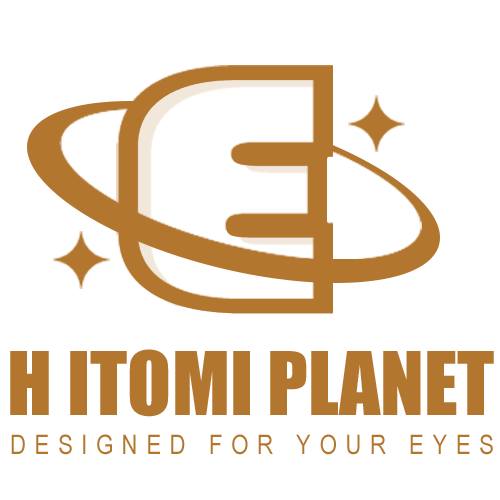
1.56 vs 1.6 vs 1.67 vs 1.74 Lenses: How to Choose Based on Prescription & Lifestyle
Share
- Refractive Index Comparison Overview
- Understand the Trade‑offs Between Lens Indexes
- What Is Lens Refractive Index?
- Comparing Lens Indexes
- 1.56 Index Lens: Pros & Cons Deep Dive
- 1.6 Index Lenses
- 1.67 Index Lenses
- 1.74 Index Lenses
- Frequently Asked Questions (FAQ)
Refractive Index Comparison Overview
| Index | Thickness Reduction | Abbe Number | Hardness | Approx. Price (USD) |
|---|---|---|---|---|
| 1.56 | ~15% | 38 | CR‑39 (softest) | $12 and up |
| 1.60 | ~20% | ~41 | High‑rigidity polymer | $20 and up |
| 1.67 | ~33% | ~32 | Ultra‑high rigidity | $36 and up |
| 1.74 | up to ~50% | ~33 | Super‑high rigidity | $85 and up |
Understand the Trade‑offs Between Lens Indexes
Understand how lens indexes impact thickness, weight, optical clarity (Abbe value), and durability. Learn to balance aesthetics, functionality, and budget for your prescription needs.
What Is Lens Refractive Index?
The refractive index measures how efficiently a lens bends light. Higher indexes create thinner lenses for stronger prescriptions but may reduce optical clarity and hardness.
Comparing Lens Indexes
Refractive Index vs. Thickness Reduction Chart

1.56 Index Lens: Pros & Cons Deep Dive
- Economic Choice: Starting at just $12, offers great value.
- Edge Thickness: Thicker edges compared to higher indexes.
- Abbe Trade‑off: Abbe of 38 means moderate color fringing in bright light.
HPglasses Advantage: Our 1.56 lenses come with premium anti-scratch and hydrophobic coatings at no extra cost, plus free UV protection to keep your eyes safe and lenses durable.
1.6 Index Lenses
- Thickness & Weight: ~20% thinner than 1.56.
- Abbe Value: ~40–42 (MR‑8 material) – Superior clarity with minimal distortion.
- Hardness: Moderate durability; scratch‑resistant with coatings.
- Best For: –3.00 D to –6.00 D; balanced visual quality and aesthetics.
Usage Scenario: Outdoor sports enthusiasts will appreciate ~20% weight reduction plus high impact resistance for all‑day comfort.
HPglasses Advantage: Our 1.6 lenses feature MR‑8 polymer with ultra‑clear optics and reinforced edge strength—perfect for professional and active use.
1.56 vs 1.6 Index Lenses: How to Choose?
- Thickness: 1.56 reduces thickness by ~15%, 1.6 by ~20%.
- Abbe Value: 38 for 1.56; ~41 for 1.6—better chromatic control.
- Price Gap: ~$8 difference at entry price point.
- Best For: Designers or drivers who need slimmer lenses with higher clarity.
1.67 Index Lenses
- Thickness & Weight: ~30% thinner than 1.6.
- Abbe Value: ~32 – Noticeable chromatic aberration for sensitive users.
- Hardness: High rigidity; better scratch resistance.
- Best For: –6.00 D to –9.00 D; prioritizes slimness over optical precision.
HPglasses Advantage: Our 1.67 ultra‑high index lenses include multi‑layer anti‑reflective and blue‑light filtering coatings, ensuring both thinness and visual comfort.
1.56 vs 1.67 Lenses: In‑Depth Comparison
At a –5.00 D prescription, 1.67 lenses are roughly 40% thinner than 1.56, offering a flatter profile. Color dispersion increases as Abbe drops to ~32 for 1.67.
1.74 Index Lenses
- Thickness & Weight: Thinnest option (~50% thinner than 1.56).
- Abbe Value: ~30–32 – Lowest clarity; color fringing may occur.
- Hardness: Most scratch‑prone; requires premium protective coatings.
- Best For: Prescriptions over –9.00 D; extreme thinness for aesthetic appeal.
HPglasses Advantage: Our 1.74 lenses come with precision edge finishing and a lifetime warranty on coatings, giving you both style and peace of mind.
Frequently Asked Questions (FAQ)
Which prescriptions suit 1.56 index lenses?
Recommended for –1.00 D to –3.00 D; beyond –4.00 D, upgrade to 1.6 or higher.
Why do high-index lenses cause chromatic aberration?
Higher refractive index → lower Abbe number → more dispersion; for example, 1.74 has an Abbe of ~30–32.
How much more does 1.6 cost compared to 1.56? Is it worth upgrading?
The price gap is about $8–$14; if your prescription is >–3.00 D or you want a thinner profile, 1.6 is recommended.





